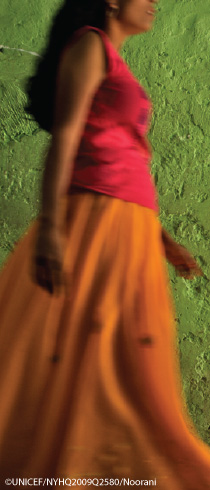
WHO ARE KEY AFFECTED WOMEN AND GIRLS?
Key affected women and girls in Asia and the Pacific are women (including young women and transgender women) and girls (including adolescent girls) most at risk of, and most affected by, HIV. They include women and girls living with HIV, female sex workers, women and girls who use drugs, transgender women, mobile and migrant women, female prisoners, women with disabilities, women in sero-discordant relationships, and female partners of men who engage in behaviours that increase their risk of HIV infection.

-
New: Unzip the Lips video on the SDGs and Key Affected Women and Girls in the HIV epidemic in Asia and the Pacific click here
-
Estimated 1.7 million women and girls living with HIV in Asia and the Pacific.
-
About 1/3 of new adult HIV infections are in women. One in six new HIV infections are among young female 15 to 24.
-
Significant numbers of women are infected through sex with their spouse or intimate male partner.
-
HIV prevention coverage is estimated to reach only 1/3 of all female sex workers in the region.
-
Human rights violations reported by women and girls living with HIV include forced abortion and forced or coerced sterilization by healthcare workers.
-
Women and girls who use drugs often feel excluded from male-centered harm reduction services and lack access to HIV-related information and services.
-
Transgender women are 49 times more likely to have HIV than other adults of reproductive age, according to a global 2012 study that included six countries from the region.
















